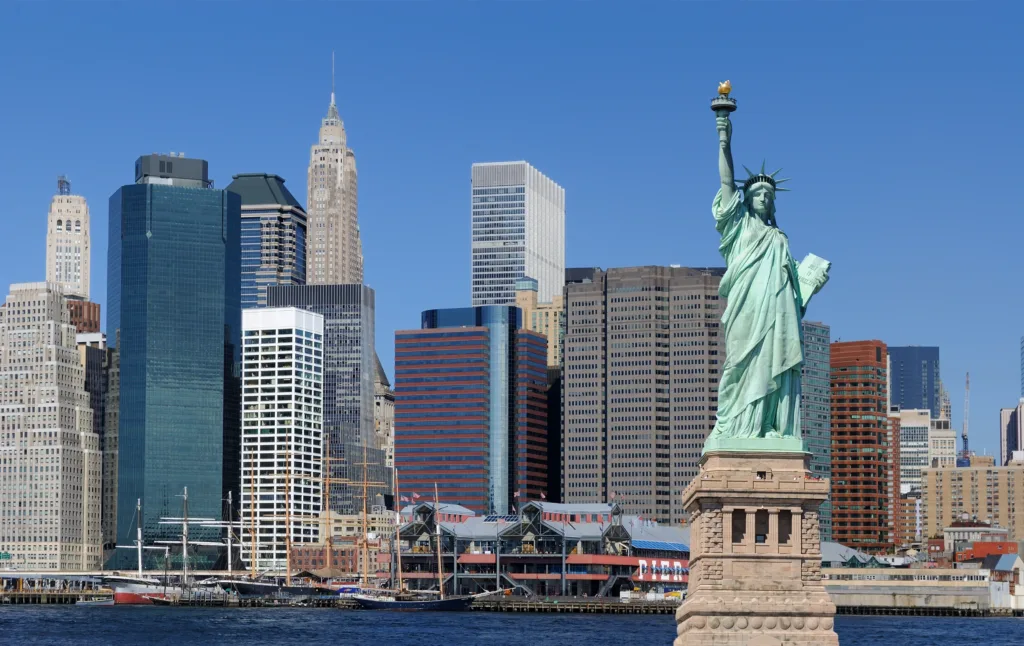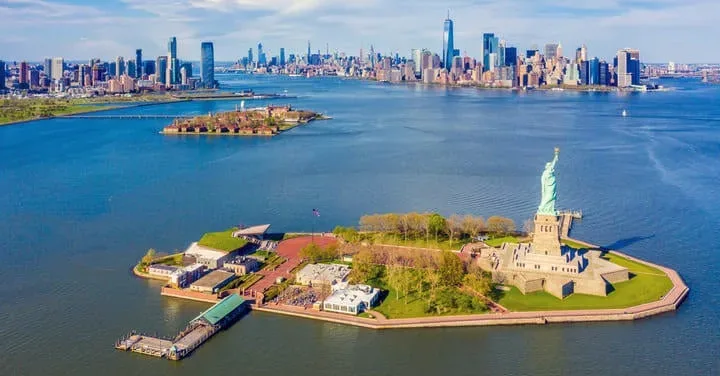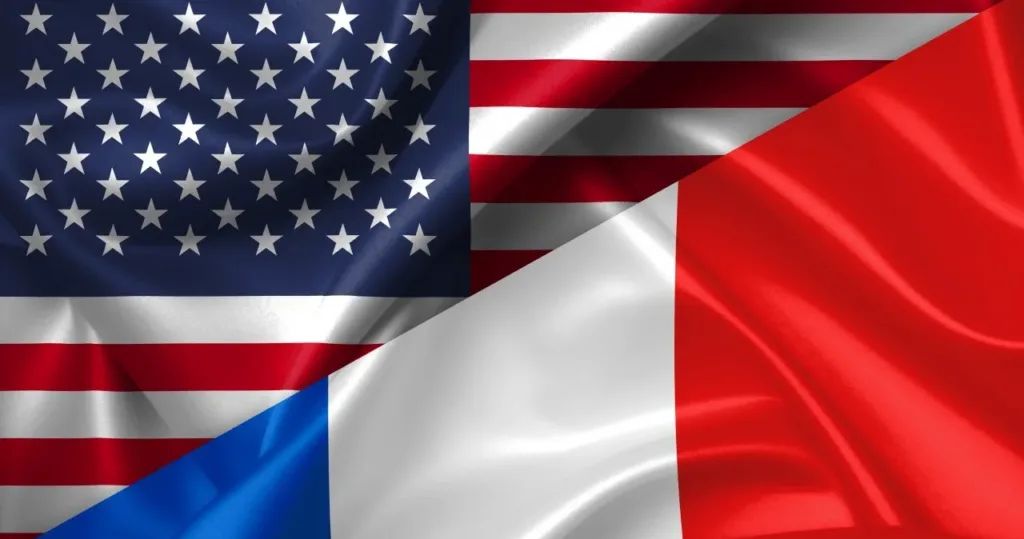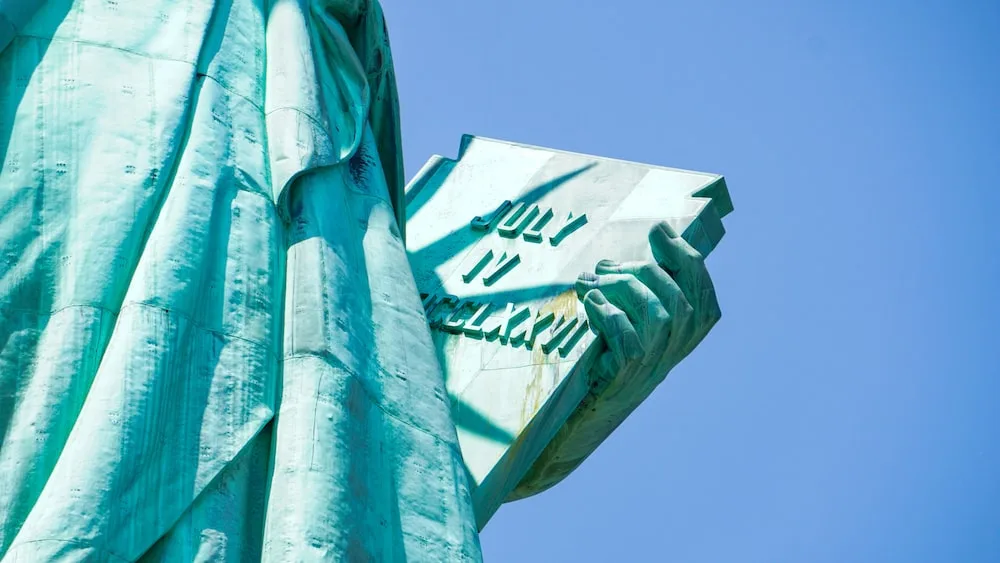Iconic Statue Of Liberty: The Eternal Embrace: France’s Gift to America

The statue’s official name is Liberty Enlightening the World, but today it’s known as the Statue of Liberty. The iconic Statue of Liberty is a symbol of friendship between France and the United States friendship. The friendship between the United States and France is a historical and enduring bond that has deep roots dating back to the American Revolutionary War in the 18th century. France played a pivotal role in the American Revolutionary War.
The first country who officially recognize the United States as an independent nation was France. France and the United States have been allies in critical moments throughout history, including both World War I and World War II. The Iconic Statue of Liberty is the most iconic symbol of their friendship.
Let’s embark on a fascinating journey to unravel the secrets of the iconic Statue of Liberty. In this article, we’ll delve into its rich history, the incredible construction process, and where you can explore its inner wonders.

France made a big statue and gave it as a gift to the United States in 1876. A sculptor named Frederic Bartholdi designed it, and an engineer named Gustave Eiffel created the steel frame inside the statue. This statue is known as the Statue of Liberty.
Geography: Location of Iconic Statue of Liberty
The statue’s official name may be Liberty Enlightening the World, but in our hearts, it’s simply the Statue of Liberty. This grand symbol of freedom was a generous gift from the people of France to the United States in 1886. To get a sense of its location, let’s zoom in on the map: France in Europe, and across the vast ocean, the United States.
The iconic Statue of Liberty stands tall on the East Coast, nestled between the states of New York and New Jersey. The Upper Bay, also known as the New York Harbor, cradles this magnificent statue on Liberty Island. Zoom out, and the iconic skyline of Manhattan unfolds, with neighboring attractions like Governor’s Island and the historic Ellis Island, where countless immigrants set foot in the United States.
As they sailed into the harbor, the Statue of Liberty was their first glimpse of the land of opportunity, immigrants coming to the United States. The Statue of Liberty is really, really big! It’s like a giant in the middle of New York Harbor.

History and Facts Of the Iconic Statue Of Liberty
The iconic Statue of Liberty, synonymous with freedom, carries a torch of hope in her right hand and on her left, a tablet bearing the date of the Declaration of Independence in Roman numerals. One poignant detail often missed from the ground is the broken shackle and chain at her feet, symbolizing the abolition of slavery. This towering masterpiece reaches a height of 46 meters, or 93 meters if we count from the ground – as tall as a 20-story building.
To put it in perspective, her big toe dwarfs a human. In 1886, she held the title of the world’s tallest statue until the Statue of Unity in India claimed the crown. Crafted from copper, originally resembling a shiny penny, it turned its iconic green hue over two decades due to exposure to the elements. Impressively, this thin layer of copper is only 2.4 millimeters thick, thinner than two American pennies.
Construction Of The Iconic Statue Of Liberty
The statue was built in pieces and took a lot of planning. The statue was designed by the French sculptors, Frederic August Bartholdi and Gustave Eiffel. Frederic August Bartholdi made the initial sculpture out of clay. This was only 1.2 meters high. The average adult is a little taller than this. Next, a larger version would be twice the size and would be made out of plaster.

Frederic August Bartholdi (1834-1904)

Gustave Eiffel (1832-1923)
The next version would be much bigger. This is 1/4 the size of the full statue. At each stage of enlargement, Bartholdi would be able to further perfect the details of the statue. It was built in pieces inside the workshop for a full-size version.
Due to a lack of funds, the finished version of the statue’s head was displayed in France, and the right arm with a torch was displayed in the United States to raise money. Visitors could pay money to climb to the top of each of these.
From the plaster model of the statue to the finished copper version, the final version was made out of sheets of copper. They used a method called repousse. They would take pieces of the full-size plaster model of the statue and build a wooden mold right up next to it.
This would then be used to shape the pieces of copper. They would hammer them in place until they would fit the shape of the wooden mold. After that, the copper was supported on the inside with iron straps. They completed pieces of the Statue of Liberty, these pieces would never be able to hold their own weight.
It needs a supporting structure, and this was designed by Gustave Eiffel. The Statue of Liberty has an iron pylon at the very center, which is the spine of the Statue. Then smaller support beams were built around this to support the copper pieces of the statue. The structure allows the statue to sway in the wind by up to 12 centimeters at the very top.
Statue Of Liberty: Journey From France to The United States
The statue was built in Paris, France, in almost 10 years and then it was taken apart into 350 pieces. All the pieces were shipped across the ocean to the United States. Assembling of the statue on top of the pedestal took nearly 4 months. Expenditure on manufacturing the Statue was born by France and installation on the pedestal was born by the United States.
Outside Of The Statue of Liberty
To experience this marvel in person, a ferry ride is the way to go, unless you fancy a long swim (not recommended!). Ferries depart from Liberty State Park in New Jersey and The Battery at the southern tip of Manhattan, taking approximately 15 minutes to reach Liberty Island.
Spanning just under 15 acres, the island features Flagpole Plaza, the Information Center, a cafe, a bookstore, and a gift shop. The Statue of Liberty Museum, opened in 2019, offers a modern perspective on the monument’s history.
Visitors can explore the island, providing a unique vantage point from every angle. The statue’s base, resembling a star, stands as a remnant of the old military base, Fort Wood. Purchasing a pedestal ticket allows access to the statue’s base and even the observation deck.
For those seeking a closer look, crown tickets are available but require booking well in advance. However, due to recent circumstances, the interior access to the pedestal and the statue remains temporarily restricted.
Inside Pedestal Of The Iconic Statue of Liberty
For those with pedestal tickets, entering the statue’s interior begins with the Centennial Doors. Previously, the original torch graced the lobby, but it has since been relocated to make way for the new museum, which was unveiled in 2019. Once inside, you’ll have two options: an elevator or a 192-step climb. The seven floors within the pedestal offer an array of perspectives, with level 3P providing outdoor views and 6P hosting the official Observation Deck.
Inside Of The Statue of Liberty
If you’re fortunate enough to have a crown ticket, your journey takes you to level 7P. Here, the adventure unfolds as you navigate the Double Helix Stairway, spiraling upwards. The climb takes you within the statue’s inner structure, offering a unique view of the metal framework and the intricate details of the statue’s dress.
The crown, with limited occupancy, provides a stunning panorama of the harbor through 25 windows. Awaiting at the top are intricate hair patterns and a nightly display of lights. For those curious about the torch, access has remained restricted since 1916 due to an explosion in New York Harbor.
However, maintenance workers continue to climb for upkeep. You can even spot the gate providing access to the arm and the arduous ladder climb to the top. Although current restrictions limit access, it’s hopeful that the public will once again be allowed inside this iconic monument in the near future.
Friendship symbol of France and The United States
The iconic Statue of Liberty is a big symbol of friendship between two countries: France and the United States. It’s like a gift from France to America, and it’s all about saying, “Hey, we’re friends, and we care about each other!

The idea came from a Frenchman named Édouard René de Laboulaye. He wanted the statue to show how France and the U.S. had a really good friendship. So, they built this huge iconic Statue of Liberty to celebrate that friendship. The iconic Statue Of Liberty is a symbol of friendship between France and The United States

This shows how France and the U.S. stand together for these important ideas. So, when you look at the iconic Statue of Liberty, you can think about it as a big, friendly hello from France to America, saying, “We’re pals, and we believe in freedom and democracy!” It’s a cool way to show how countries can be good friends.

Symbols of Freedom Of Iconic Statue of Liberty
1- Book In Hand of Statue of Liberty

In her left hand, she holds a Tablet/Book that has the date of the Declaration of Independence in Roman numerals. The statue holds a Tablet/Book to symbolize a copy of the U.S. Declaration of Independence. It’s like a symbol of the important paper that talks about freedom and democracy.
The book has the date “July 4, 1776” written on it. This date represents the day the United States declared its independence from Great Britain through the adoption of the Declaration of Independence. It symbolizes freedom and independence.
2- Broken Chains at the Feet of Iconic Statue of Liberty
You see from the ground a broken shackle and chain. This is meant to symbolize the end of slavery. The broken chains at the feet of the iconic Statue of Liberty are a powerful symbol that holds deep historical and symbolic significance.

These chains represent the idea of freedom from oppression, tyranny, and, specifically, the abolition of slavery. The Iconic Statue Of Liberty’s designer included the concept of broken chains in its design to symbolize the end of slavery and the struggle for liberty.
The chains are intended to remind viewers of the long and difficult journey that millions of people endured as they sought freedom from enslavement.
It means that people should have the right to live freely and make their own choices. It’s also a symbol of hope for immigrants who came to the U.S. in the late 19th and early 20th centuries.
3- Torch in Hand of Statue of Liberty
The torch in the Iconic Statue Of Liberty’s hand is like a big, bright flashlight. It means a few important things:

Shows the Way: The torch helps show the way, like a guide in the dark. It’s like saying, “This way to a better life.”
Freedom and Knowledge: It’s a symbol of freedom and knowledge. It reminds us that we should have the freedom to make choices and learn new things.
Welcoming Immigrants: A long time ago, it also meant “welcome” to people coming to America from other countries. It said, “You can find a new home here.”
Called “Lady Liberty”: Some people even call the statue “Lady Liberty.” The torch is like her special light that leads to a good future.
Part of History: The torch has been with the statue since it was made in 1886. It’s seen many important times in history and is still important today.
Kept Shiny: People take good care of the torch. They clean it and fix it to make sure it stays bright and strong.
So, the torch in the statue’s hand is like a bright symbol of hope, freedom, and the chance for a better life. It’s a friendly light that says, “Come this way, and good things can happen.”
Threat to the Statue of Liberty
The National Park Service has managed the Iconic Statue Of Liberty well, making some restorations and updates to it over the years. The statue is now a part of Liberty Island. However, it faces threats like pollution, bad weather, Climate Change, and lots of visitors throughout the Global Village, so it needs ongoing care to preserve its importance for the future. So. we can say the Iconic Statue Of Liberty is the best example of friendship between France and The United States for the rest of the world.


